Springboard to Nowhere: On the Serious Shortcomings of the Russian UDC Project 23900
Speaking about the needs of the Russian Navy, we previously touched the topic of construction in Russia of two UDCs of project 23900. In general, this is a very correct undertaking, which is a transitional step to the emergence of a modern aircraft carrier fleet in our country. However, the universal amphibious assault ships under construction in Kerch have a number of serious problems that are visible to the naked eye, which can prevent the full potential of the Ivan Rogov and Mitrofan Moskalenko from fully unlocking.
Speaking about the possibilities of the UDC, one should refer to the Western experience. The undoubted trendsetters in this area are the United States, and American allies from Europe and Asia are trying to follow their example. Russia has gone its own way in this matter, and, alas, this is exactly the case when it is not worth reinventing the wheel. But let's talk about everything in order.
UDC abroad
In the United States, there are currently two types of UDCs in the ranks - "Wasp" and "America". And these are, without exaggeration, the best universal amphibious assault ships in the world.
The full displacement of the UDC type "Wasp" is 40,5 thousand tons. They are capable of transporting armored vehicles, as well as up to 2 thousand marines, have a straight rectangular deck, on which helicopters, tiltrotors, aircraft with short takeoff and vertical landing can be based. The "Wasp" air group changes depending on the task: to gain supremacy at sea, they are equipped with deck-based SCVVP and anti-submarine helicopters, for landing ashore - attack and transport helicopters, as well as F-35B fighters. A total of eight ships of this type were built in the United States, which are rightfully considered light aircraft carriers, but one of them was recently seriously damaged by fire and was decommissioned.
Today the top of perfection in the field of UDC is the "America" project. The Pentagon has planned the construction of 11 such ships, 2 are already in service, one is on the slipway. The full displacement of this type of UDC is 45,7 thousand tons. "America" also carries up to 2 thousand marines, but its main advantage is its reinforced air wing. The ships have a straight rectangular deck, on which 12 MV-22 tiltroplanes, 5 SKVVP F-35B, 4 ΑH-1Z attack helicopters, 4 ΜΗ-53 and 3 UH-1 helicopters can be based. An inexperienced viewer will not understand how this UDC differs from an aircraft carrier in general. Strictly speaking, nothing, this is a light aircraft carrier.
The French and Egyptian navies are armed with Mistral-type UDCs. They are capable of transporting troops and armored vehicles, and act as command ships. The straight deck of a rectangular shape accommodates multipurpose or attack helicopters. The Russian Navy was supposed to get 4 UDCs of this type, but Paris thwarted the deal. Domestic ships of the project 23900 are designed to replace the Mistral, but we will return to this issue later.
For the Chinese Navy, 3 UDC type 075 are under construction. It is obvious that Beijing was inspired by the experience of the United States and France, because these ships are something in between "America" and "Mistral". The total displacement of type 075 is 40 thousand tons, the helicopter carriers have a straight solid rectangular deck, which makes it possible to base aircraft with a short takeoff and vertical landing on them.
Spain and those countries that cooperated with it took a slightly different path. The versatile amphibious assault ship "Juan Carlos I" L61 was also built with an eye on the American "Wasp", but in contrast to it has a springboard on the bow. Its straight deck at the end is noticeably upturned, which should facilitate the takeoff of the SCVVP type "Harrier" or F-35B. A new Turkish UDC TCG Anadolu (L-400) and 2 Australian UDCs of the "Canberra" type were built according to the same modified Spanish project with a springboard.
How the UDC turns into an aircraft carrier
Why have we devoted so much time to reviewing the UDC of foreign projects? As you can see, the deployment of F-35B or Sea Harrier fighters on them turns universal amphibious ships into multipurpose light aircraft carriers. The question is, is it worth building "ordinary" heavy aircraft carriers at all, if there is a UDC? The question is not so simple.
On the one hand, horizontal take-off and landing carrier-based fighters have a significant advantage over SCVVP in terms of flight range and combat load. Pilots leave a lot of health when taking off from a catapult, but an AUG with a full-fledged aircraft carrier has a much larger combat radius than an AUG, which has a UDC with SCVVP, and therefore can act against it from a safe distance for itself. A vertical takeoff and landing aircraft is forced to consume too much fuel during takeoff and landing, and its payload is much less than that of the American carrier-based aircraft. This situation can be partially corrected by taking off according to a shortened scheme with a vertical landing (there is nowhere to put catapults and aerofinishers on the UDC). It is even better if there is a springboard on the bow, which is done on the Spanish, Turkish and Australian amphibious assault ships. However, mention should be made of the main unavoidable drawback of the UDC: it is impossible to place and use an AWACS aircraft on them, which is necessary for reconnaissance, air combat control and the issuance of data for target designation to ship missiles.
Taken together, this means that the basing of aircraft with a short takeoff and vertical landing on UDCs with a bow springboard significantly increases the combat capabilities of such a light aircraft carrier. Yes, it is not competitive against the AUG of the US Navy, but it can be used as an escort aircraft carrier, as the core of a search and strike anti-submarine group, as well as for strikes along the coast, followed by a landing. We conclude that universal amphibious assault ships should not replace, but complement full-fledged aircraft carriers, as well as SCVVPs are not a panacea, but have a wide enough niche for use in conjunction with horizontal take-off and landing aircraft.
What's wrong with the project 23900 UDC?
Now let's move on to our rams. As we have already noted, the decision to build two domestic UDCs is the right step. The Russian Navy will significantly expand its capabilities for operations in the far sea zone. The helicopters will allow "Ivan Rogov" and "Mitrofan Moskalenko" to conduct anti-submarine warfare and fire support of the amphibious assault. Turning them into the first two Russian light aircraft carriers could be the appearance of the Navy's own SCVVP.
At the moment, we do not have short takeoff and vertical landing aircraft. In the late Soviet period, a very successful supersonic carrier-based fighter Yak-141 was developed, and in the early nineties, work was underway on its modernized version of the Yak-201. Several years ago, the profile Deputy Prime Minister Yuri Borisov said that the topic of "vertical units" is returning to the agenda again, and this is worth welcoming, since the SCVVP can be used not only in the fleet, but also on the front line on land in the event of the destruction of military airfields by missile strikes enemy. But are our future UDC ready to receive these aircraft?
Let's take a closer look at the layouts of Project 23900. What we see: instead of a straight rectangular deck like on Wasp, America or Mistral, or a rectangular deck with a springboard on the bow, like on Spanish, Turkish and Australian ships, on Russian The UDC deck has an irregular shape, strangely narrowed towards the bow. At the same time, the superstructure seems to be too massive when compared with foreign counterparts. But why? The simple rectangular shape maximizes the use of the deck area for helicopters. The "girls-designers" who drew the project 23900, just themselves stole the useful area from the navy. But that is not all. Such a deck design deprives the possibility of a quiet take-off from the UDC of SKVVP fighters according to a shortened scheme, that is, the transformation of Russian universal amphibious assault ships into light aircraft carriers becomes questionable.
Of course, you always want to do it your own way, but why make it worse? What is this, stupidity or sabotage? It might be worth reconsidering the approach and making changes to the 23900 project while it is still in the early stages of construction. You just need to make a normal rectangular deck, perhaps with a springboard on the bow, and slightly reduce the size of the superstructure. And then we get 2 really multifunctional UDCs.
- Sergey Marzhetsky
- LeAZ-1977/wikimedia.org
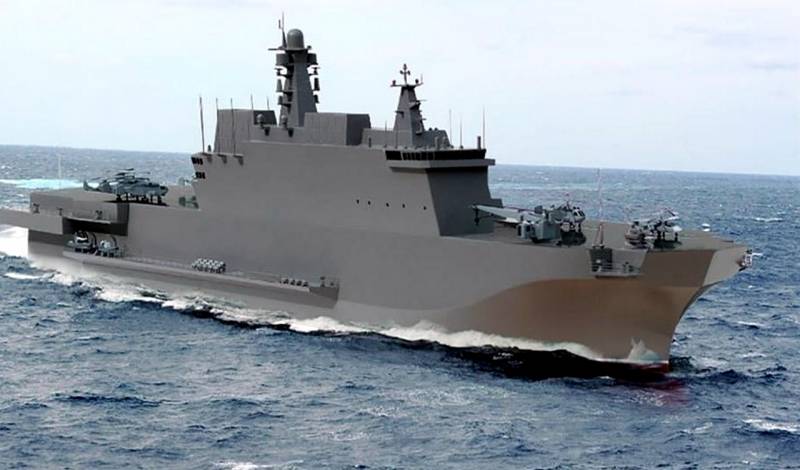
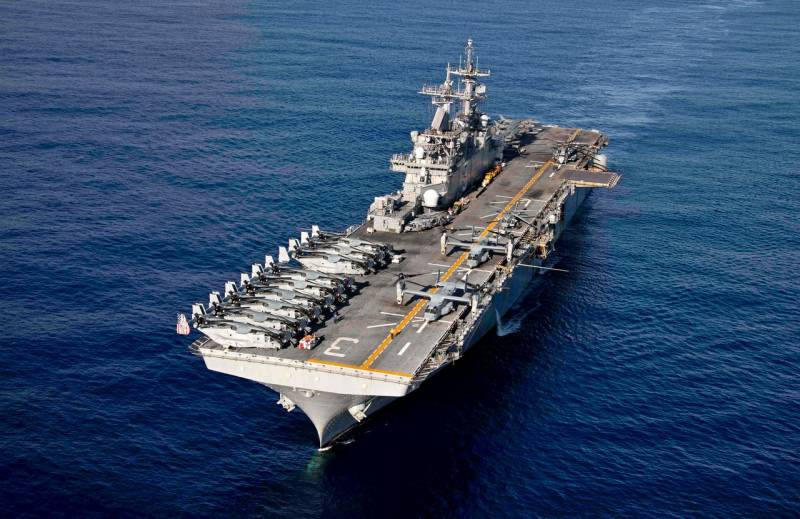
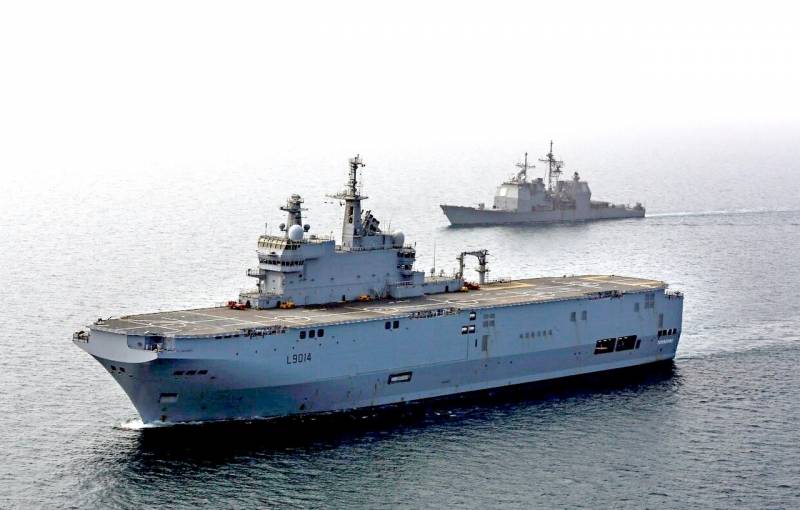
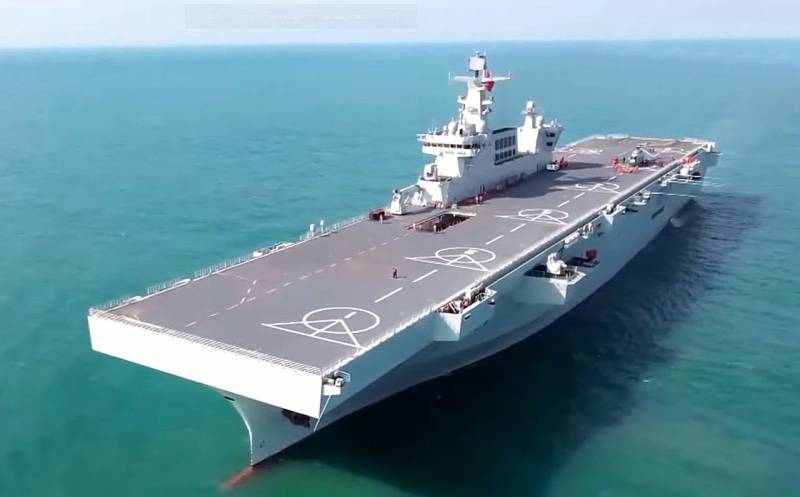
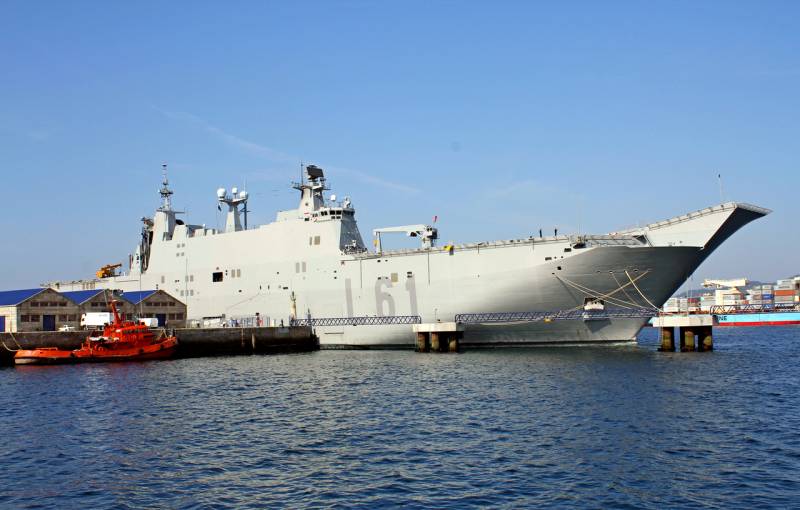

Information